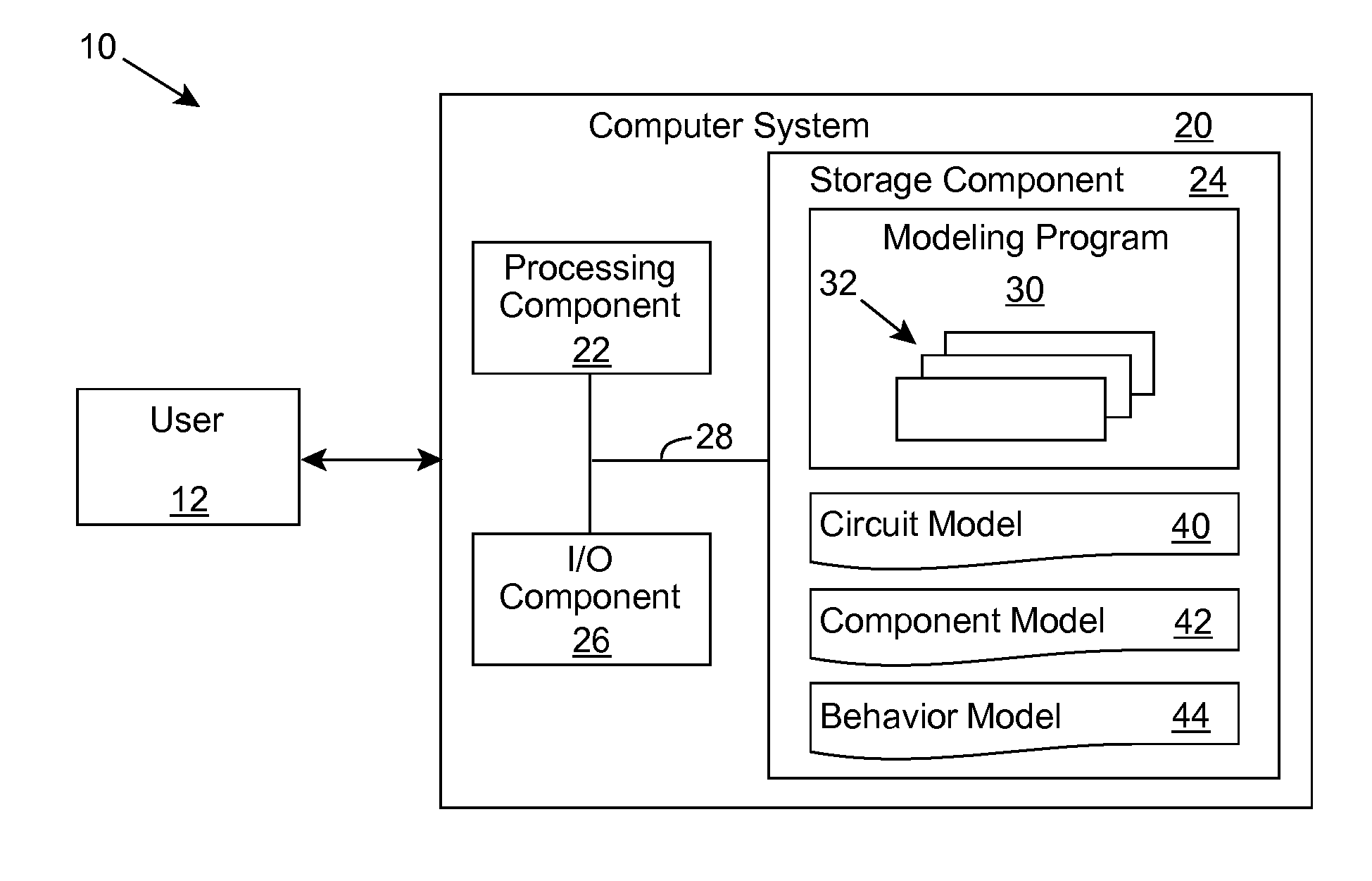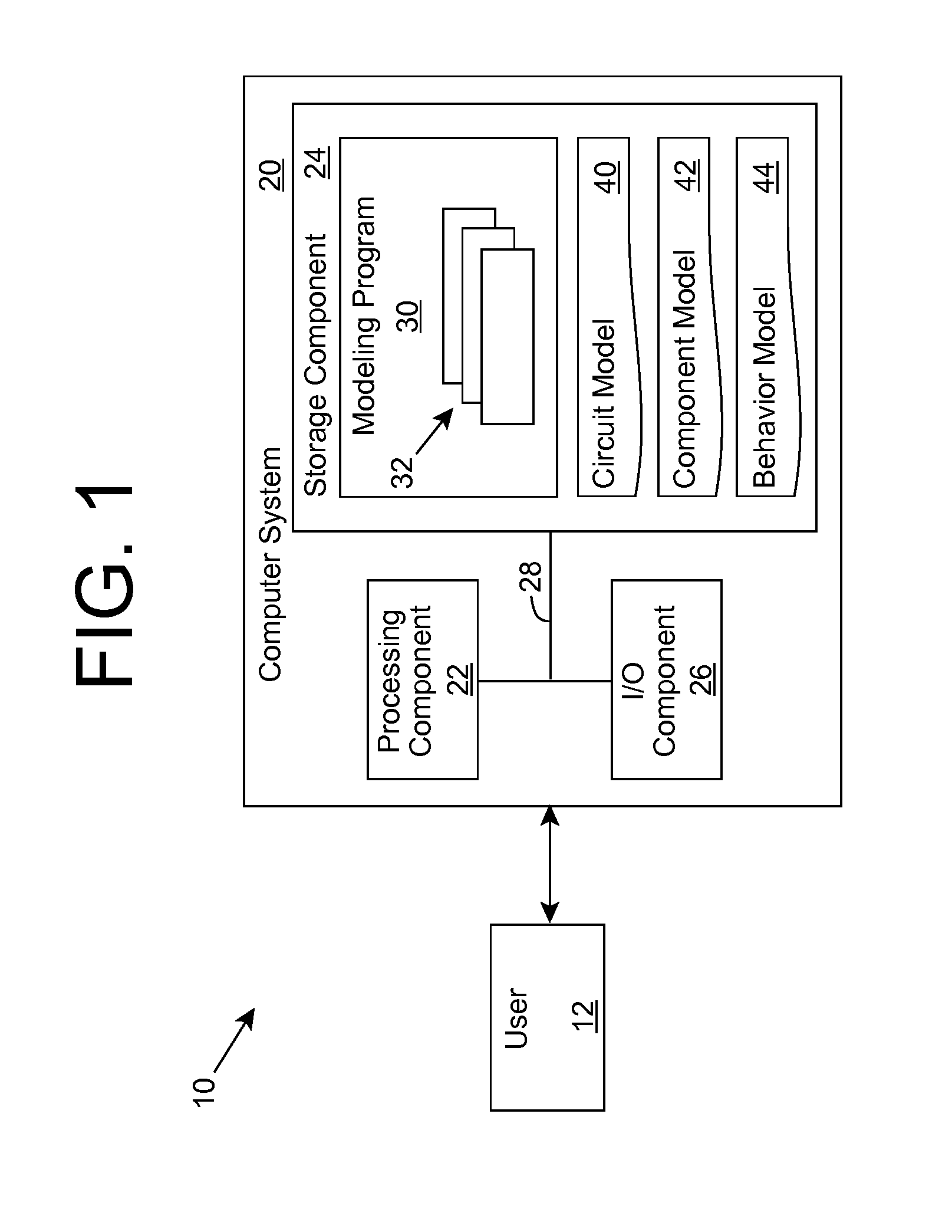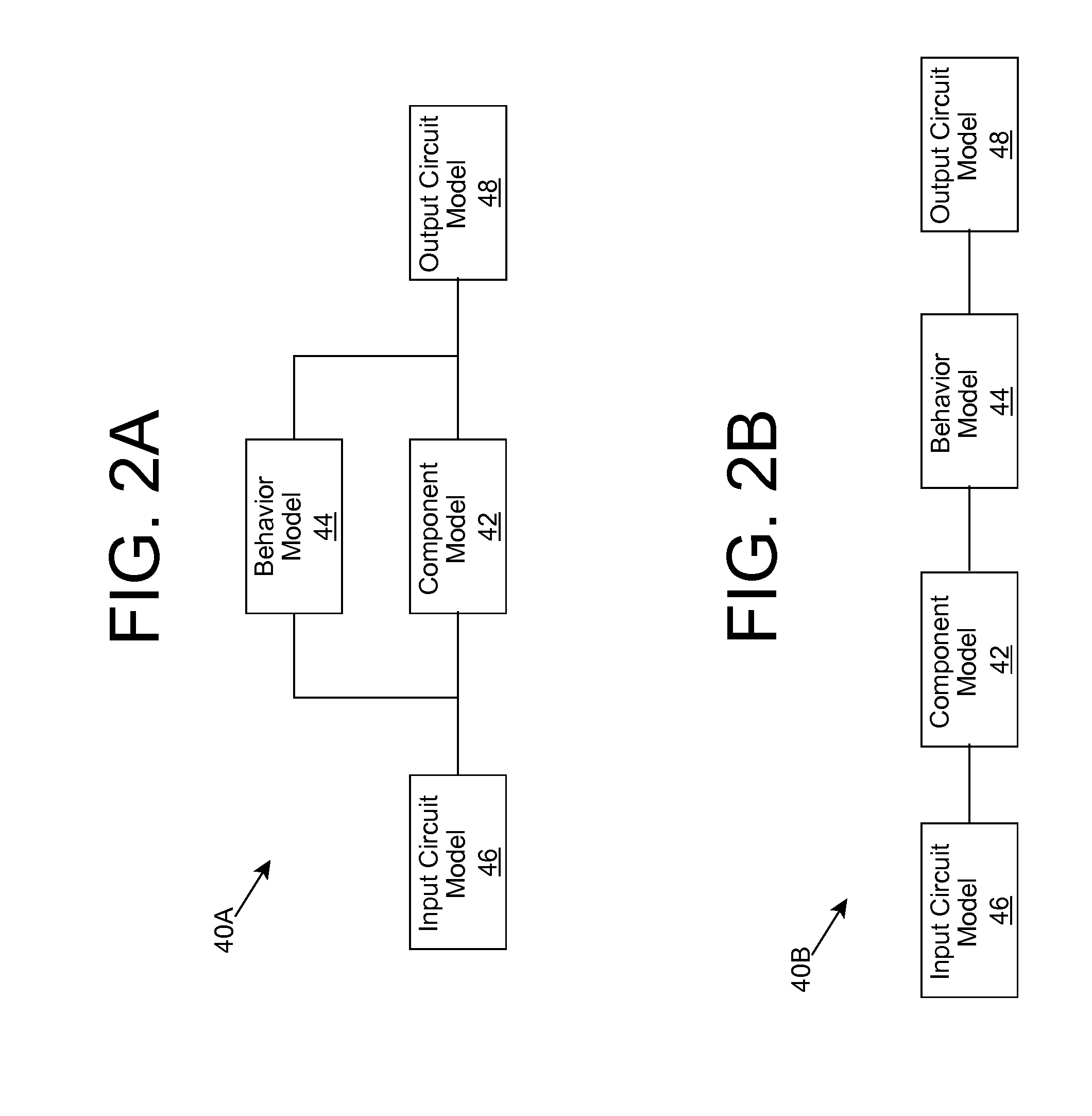Component behavior modeling using separate behavior model
a behavior model and component technology, applied in the field of circuit models, can solve problems such as convergence problems, low dynamic resistance, and voltage drop across the devi
- Summary
- Abstract
- Description
- Claims
- Application Information
AI Technical Summary
Problems solved by technology
Method used
Image
Examples
Embodiment Construction
[0021]As indicated above, aspects of the invention provide a behavior model, which is configured to simulate one aspect of the behavior of a component apart from a component model for the component. The behavior model can be included in a circuit model used to simulate operation of a circuit. The circuit model can include a component model for a component and a corresponding behavior model, which is located in parallel or series with the component model. The component model and behavior model can collectively simulate all of the behavior of the component within the circuit. In an embodiment, the behavior model simulates snapback behavior exhibited by the component. As used herein, unless otherwise noted, the term “set” means one or more (i.e., at least one) and the phrase “any solution” means any now known or later developed solution.
[0022]Turning to the drawings, FIG. 1 shows an illustrative environment 10 for modeling a circuit according to an embodiment. Environment 10 includes a...
PUM
 Login to View More
Login to View More Abstract
Description
Claims
Application Information
 Login to View More
Login to View More - R&D
- Intellectual Property
- Life Sciences
- Materials
- Tech Scout
- Unparalleled Data Quality
- Higher Quality Content
- 60% Fewer Hallucinations
Browse by: Latest US Patents, China's latest patents, Technical Efficacy Thesaurus, Application Domain, Technology Topic, Popular Technical Reports.
© 2025 PatSnap. All rights reserved.Legal|Privacy policy|Modern Slavery Act Transparency Statement|Sitemap|About US| Contact US: help@patsnap.com



